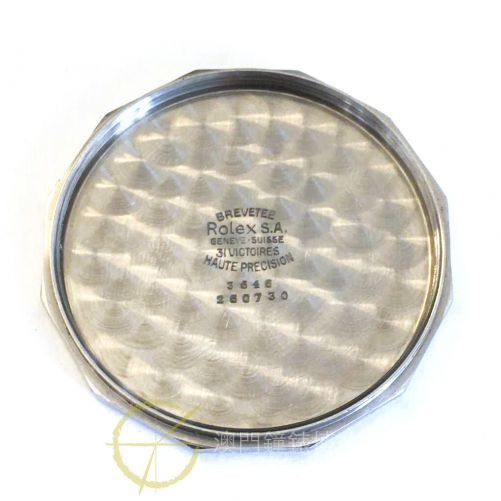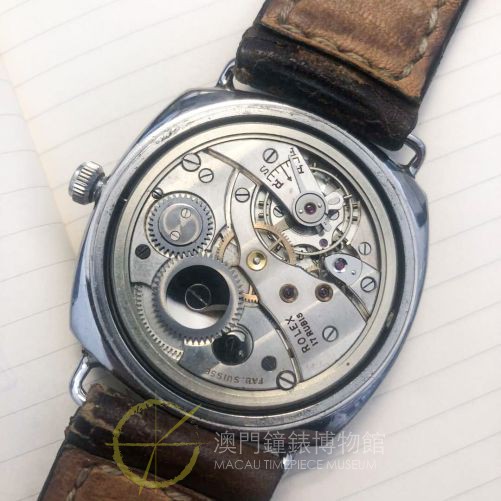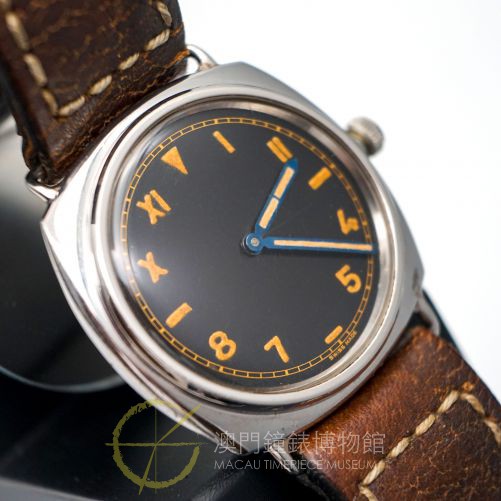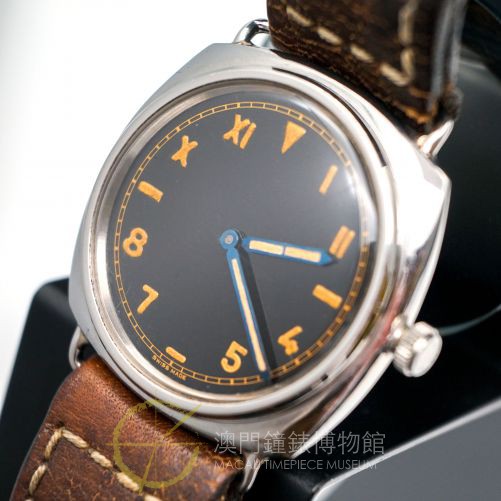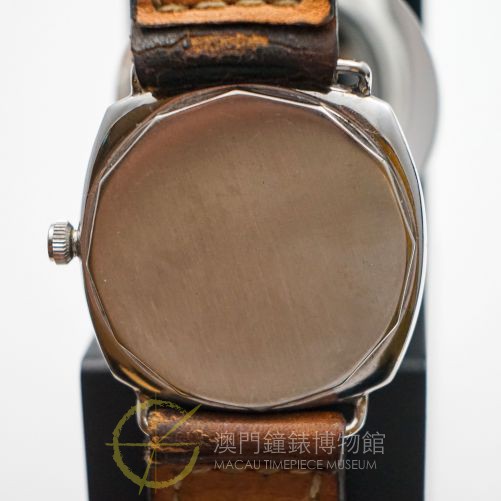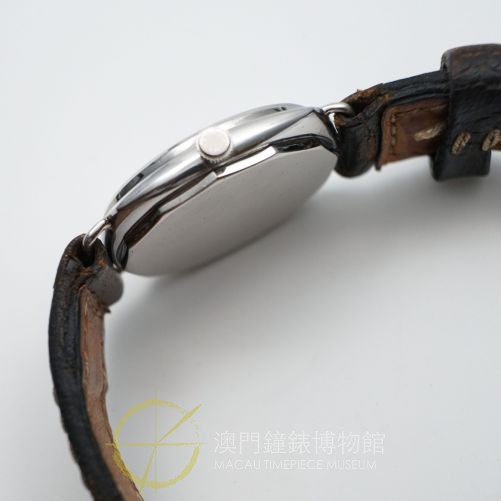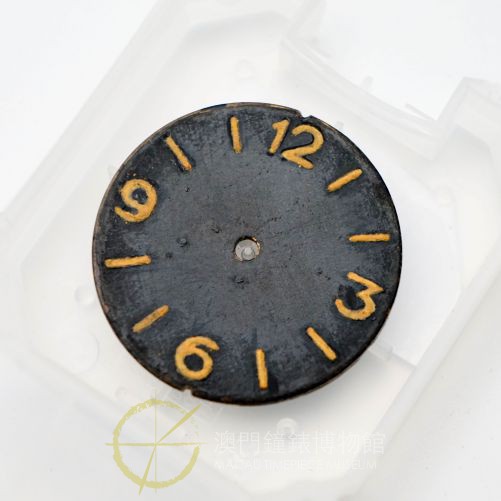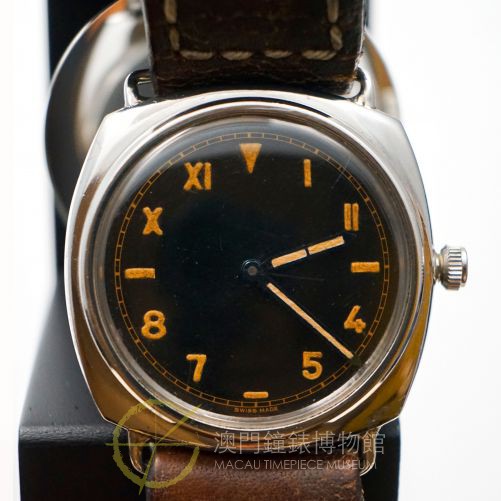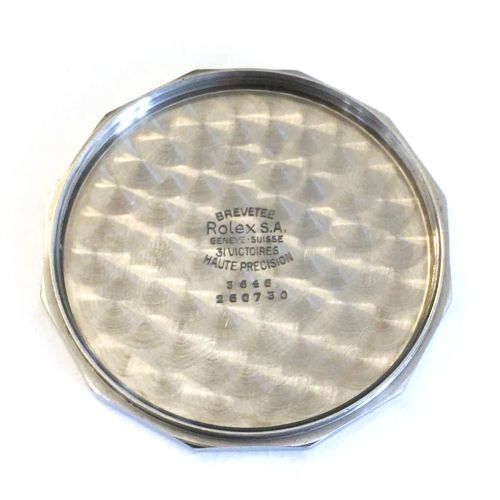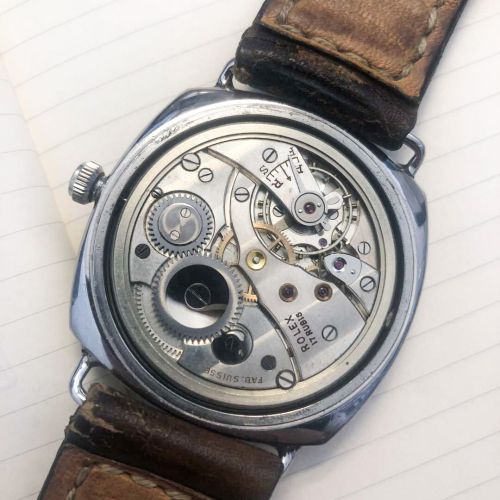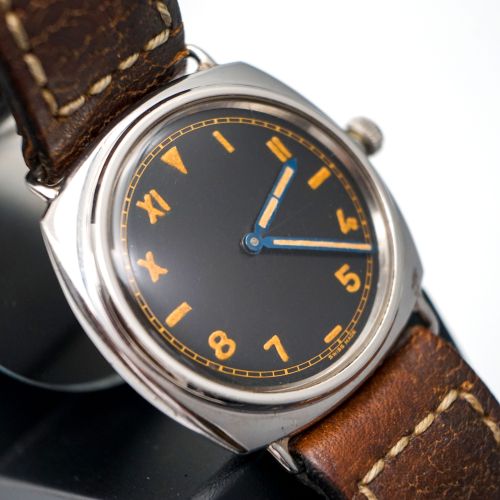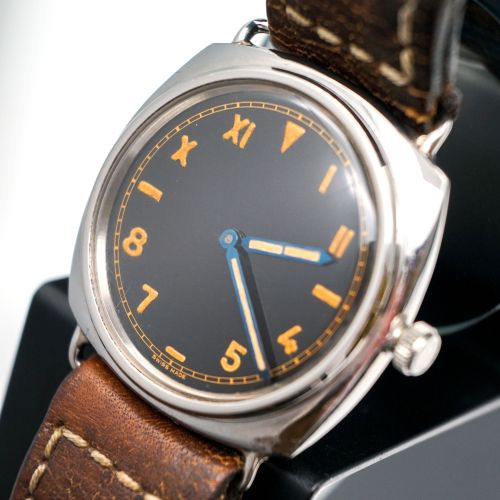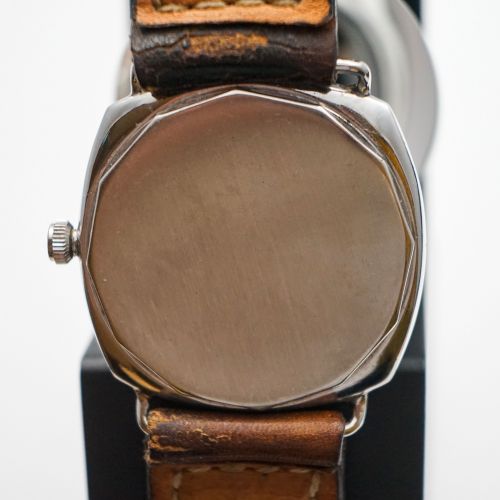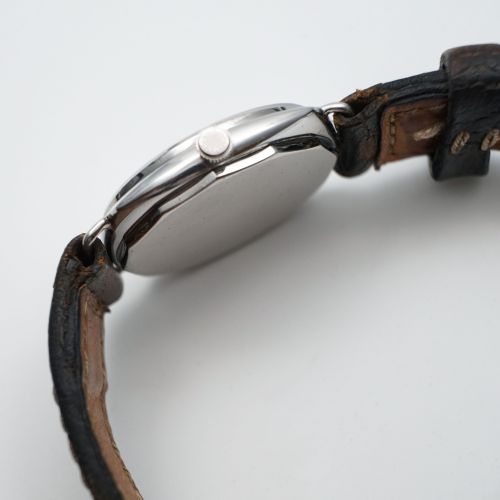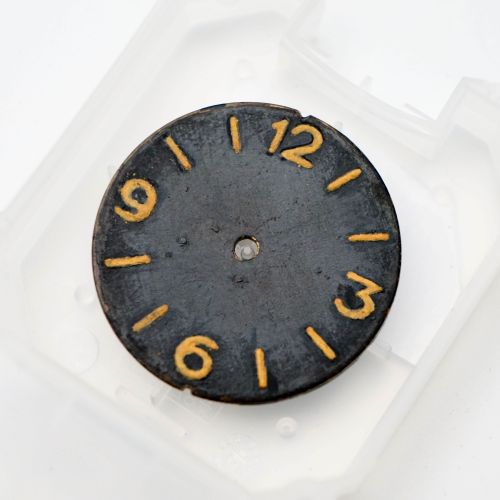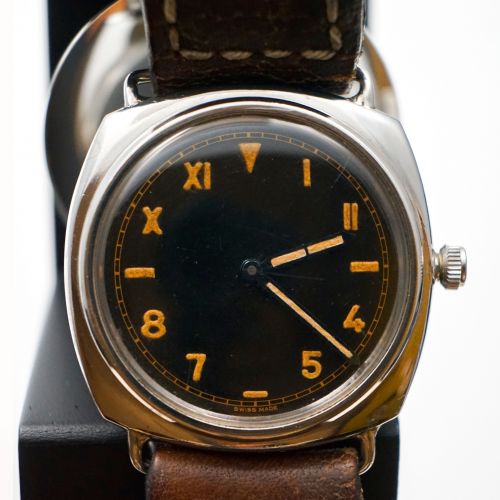REF. 3646 Type D
Inventory Number: WWP1906002
Military Diver's Wristwatch. Produced in the 1940s, 47mm, stainless steel case, Rolex Cal.618 manual-winding movement. Reference 3646 was made by Rolex for Panerai in production from 1938 until the 1950s, supplied to the Italian Royal Navy and German Navy, and produced in several versions classified Type A to Type G, only 211 pieces are known for now. According to its case number, this is a Type D version and is accompanied by an additional Arabic numeral dial.
Functions: hours and minutes.
What is California Dial?
In watch-making or horology, a California dial refers to a clock face that consists of half Roman (usually 10 o'clock to 2 o'clock) and half Arabic numerals (usually 4 o'clock to 8 o'clock). Sometimes the hours of 3, 6, and 9 are replaced with a dash instead of a numeral and an inverted triangle in place of the 12. The use of this dial style dates back to the 1930s, for example in early Rolexes, Panerai, Glycine watches, and Kampfschwimmer diver's watches. A number of Rolexes were refurbished by a company based in California using this style of dial, resulting in the name "California dial".
NOTE:
The present reference 3646 demonstrates a very interesting, if not perhaps slightly embarrassing, period in the watches’ production history. In 1944 a mistake was made. It is unclear whether this was a mistake on the part of Rolex or indeed of Panerai, all that can be discerned is that it was almost certainly an error in communication. The California dial, loved by collectors, was developed in 1941 by Rolex, but would only appear on the 3646 three years later. The first order for these dials however was confusing, and, while the dials were meant for wrist-watches they were produced for pocket watches (dial reference 103*2731). The feet, therefore, were positioned in such a way that the dial, once fitted, would have sat rotated at 90 degrees. To amend this, and salvage the dials, the feet were removed, at times very crudely, and the dials were mounted instead with screws at 12 and at 6. Later in 1944, these ‘faulty’ California dials were replaced, research suggests, by Arturo Junghans who produced the dial that accompanies the present lot. Of course, upon opening the watches it was clear that the dial was attached with screws, and so, Junghans attached his dials in the same way, as is evident from the notches visible at 12 and 6.
Interestingly Rolex, having realized the mistake, changed the batch of California dials to correct the feet placement (dial reference 103*2802). This was apparently around the same time as they decided to stop signing the watches Rolex to the case back and movement. Added later, and replacing the ‘Junghans’ dial, this is the dial type currently fitted to the present lot. Examining the case and movement numbers and movement ring, it is clear that this watch is original in all parts as the accompanying ‘Junghans’ dial was, in all likelihood, made for this watch. While the dial fitted at present is a later type, it is still a period, made after Rolex rectified the initial problem, acting almost to bring the story full circle. This watch is undoubtedly a superb physical representation of a fascinating piece of history.

